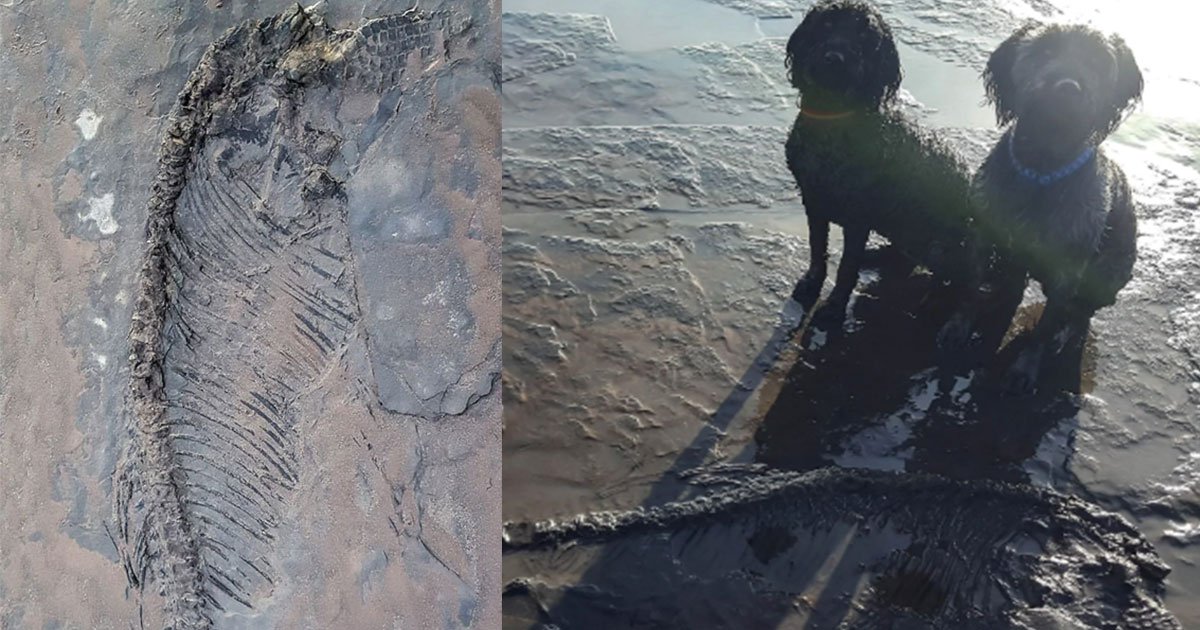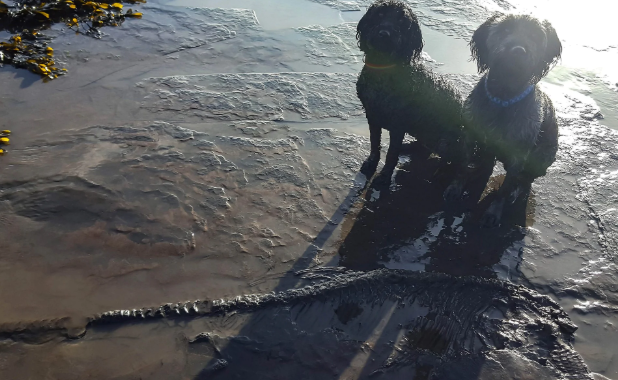A man named Jon Gopsill, 54, claims that his dogs smelled out the fossil on a beach in Somerset, which is in South West England.
According to The Telegraph, the fossil which is five-and-a-half feet long and is believed to have been unearthed by recent storms.
Gopsill, the outlet reported, fancies himself an amateur archaeologist said he thinks the fossil is 65 million-years-old and may be that of an ichthyosaur.
Ichthyosaurs resembled modern-day porpoise and they were not dinosaurs, but ancient marine vertebrates.
Gopsill said he had previously found other fossils mostly ammonites, and the Telegraph reported that “West Somerset’s northern bays are known for their fossil finds,” including rocks from the Jurassic and Triassic eras. The outlet reported that just last year, “part of the lower jaw of an 85-foot ichthyosaur was found in the Somerset village of Lilstock, thought to be 235 to 200 million years old.
”
“I often go to the beach walking with my dogs and when the tide goes out we go out to the rocks because they like playing there,” Gopsill told the Telegraph. “I have always been a bit of an amateur fossil hunter and I have found a good supply of ammonites, so I always keep my eyes open.”
“We were at the beach when I saw this thing and thought ‘what’s that?’ so I went a bit closer and thought ‘wow,’” he continued.
“I thought it was obviously a fossilised sea creature, possibly an ichthyosaur. It doesn’t have a head, I have look[ed] around but I can’t find it. It has been there for at least 65 million years.”
“I realized straight that it was amazing, museum-quality stuff, as soon as I saw it I knew I found something special. I was just blown away to see it there. It really is incredible that is has survived for such a long time and is now just there for everyone to see,” Gopsill concluded.
According to Daily Mail, Dr. Mike Day, who curates the Earth Sciences Department at the Natural History Museum confirmed the fossil found by Gopsill was likely that of an ichthyosaur.
“Looking at this specimen, based on the number of bones in the pectoral paddle, the apparent absence of a pelvic girdle, as well as the distinctive ‘hunch’ of the back, this is likely to be the remains of an ichthyosaur,” Day told the outlet. “It is not possible to identify the exact type of ichthyosaur from these images alone however.”
[rumble video_id=v4x6g7 domain_id=u7nb2]




